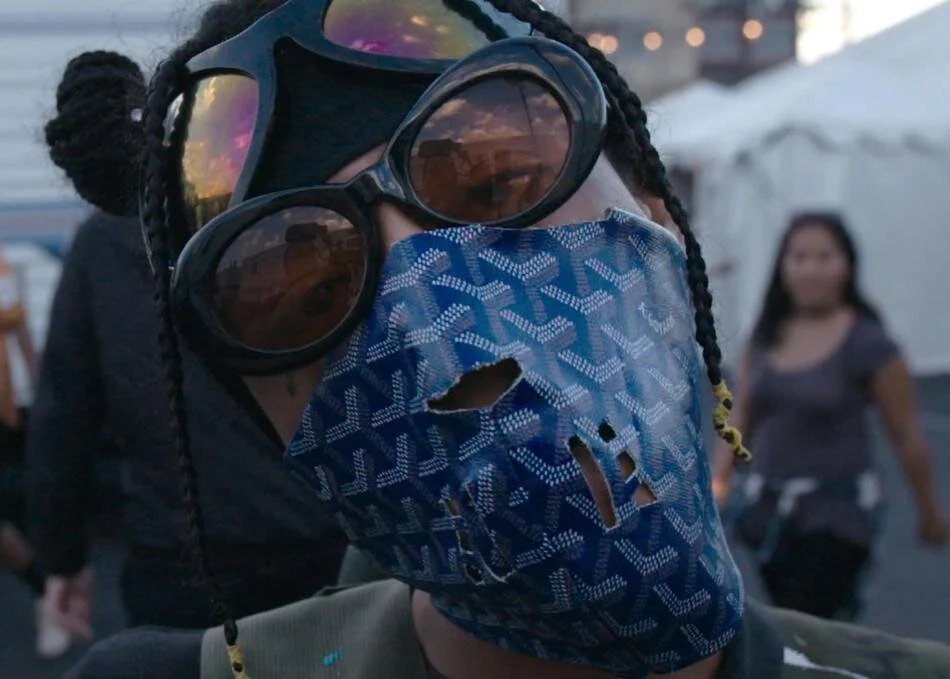More Than Just Mumble-Rappers on Xanax – “American Rapstar” and The Soundcloud Rap Movement
Porto/Post/Doc is Film & Media Festival takes place in the City of Porto in Portugal every November. In its seventh edition, the festival was presented as a hybrid set-up, with some screenings taking place in theatres and online. The festival organises itself around various film categories such as International, Transmission (films about music) and Cinema Novo (emerging talent).
Broward County, Florida. The County that has spawned a global generation of young, loyal fans is the subject of interest in Justin Staples’ new documentary ‘American Rapstar’. Staples provides us with a glimpse into the world of ‘SoundCloud Rap’, a swelling DIY sub-genre of uninhibited hip-hop that has adopted SoundCloud as its preferred streaming service. In 2016, a disruptive wave of rappers, encouraged by the low barriers to entry that SoundCloud offered, started sharing lyrically repetitive music with a low-fidelity and low-budget sonic profile. ‘American Rapstar’ offers a thrilling view into this scene through the lens of Lil Peep, Smokepurpp and Bhad Bhabie – each of which have racked up millions of Spotify streams between them.
While each rapper has their own style, there is a shared thread that unites them: frenzied live performances, distorted lo-fi trap beats and face tattoos. Their lyrics aren’t particularly dense, with more attention placed on the melody. Great stage performers who can drum up the crowd’s energy levels are rewarded with stardom and a fanatical fan base.
There are those, however, who buck the trend. Artists such as Lil Peep and Juice Wrld, who often rapped about loneliness, vulnerability and anxiety, demonstrate the genre’s versatility.
Throughout the film, we are presented with a world in which Gen Z artists draw up a counter-narrative to rap in its mainstream form. Defying the prevailing etiquette of paying homage to those who came before them, an unapologetically ahistorical Lil Xan appears on screen saying Tupac was boring. Along with celebrating incongruent musical influences, the genre holds inclusivity at its core with gender defying artists such as Lil Peep rising to the fore. His non-conformist nature and refusal to be labelled by his sexuality will have inspired a generation to accept themselves in a world inhospitable to gender expressionism.
The dark side of the genre isn’t shunned either. Staples explores a subculture defined by hedonism and vice with prescription drugs such as Percocet and Xanax in prominent use. Shock-value antics often take centre-stage and in one scene, Lil Purp recklessly smashes up a car. Although it would be too easy to pigeonhole these personalities as nothing more than mumble-rapping kids with face tattoos who are high on Xans, the film actually does a wonderful job of peeling back their layers to reveal artists often defined by pain or loss.
As the façade of decadence and youth is replaced by vulnerability, we begin to better understand the presence of drug abuse – a desire to numb pain stemming from depression and anxiety, exacerbated by online abuse. Such tragic circumstances feature heavily in the lyrics of Lil Peep, whose emo-rap variant became gospel to so many listeners around the world going through similar issues. Given that giants of the genre Juice Wrld and Lil Peep have both sadly passed away, their lyrics were a cry for help that went unheeded.
A fervent punk era energy underscores all the live performances shown in the film and an embrace of punk rock pedagogy is apparent in the South Florida rappers’ refusal of societal norms and general care-free attitude. In a further nod to the punk movement, the cover of SmokePurpp’s ‘Deadstar’ album shows him imitating punk artist GG by laying in a coffin. But drawing parallels between punk and SoundCloud rap on account of a shared rebel energy is not the whole story and simplifies the impact and culture of this unique music phenomenon by minimising its own originality.
While the genre owes a lot of its success to the digital age we live in, it is difficult to ignore the negative mental health impact that newfound fame and online exposure have on young artists. With the prevalence of social media, platforms’ are now vying for our attention in what the author Jenny Odell describes as the battle for the ‘attention economy’. During filming, rappers using their smartphone midway through an interview becomes a common occurrence. In her book ‘Alone Together’, psychologist Sherry Turkle argued that an ‘always on’ culture can actually leave us feeling lonelier. A general theme of loneliness as described earlier is often reflected in the music itself and underpins the film’s wider narrative.
Staples does well to encapsulate the profound energy and creativity of this movement by regularly showing reels of raucous live sets that transport you directly into the crowd, during which you can almost feel the reverberations of heavily distorted bass. As a viewer, you get a good sense of why this development has taken off so spectacularly, whilst also being presented with a nuanced and humanising account of the artists’ lives.







